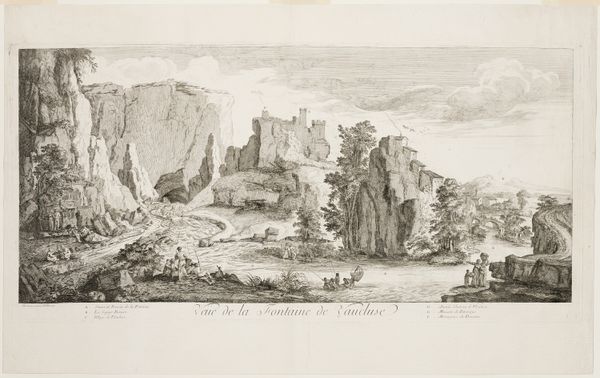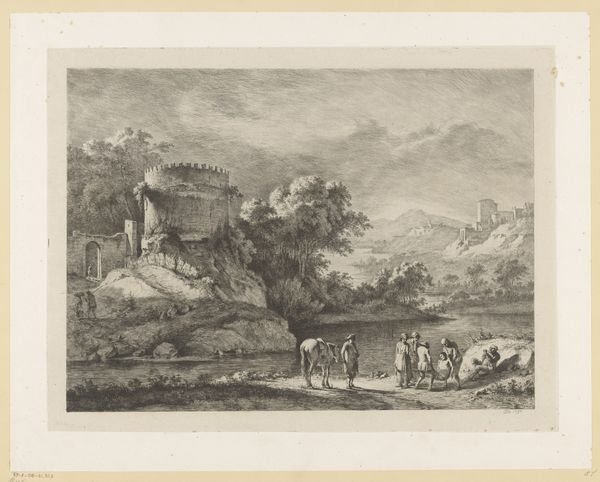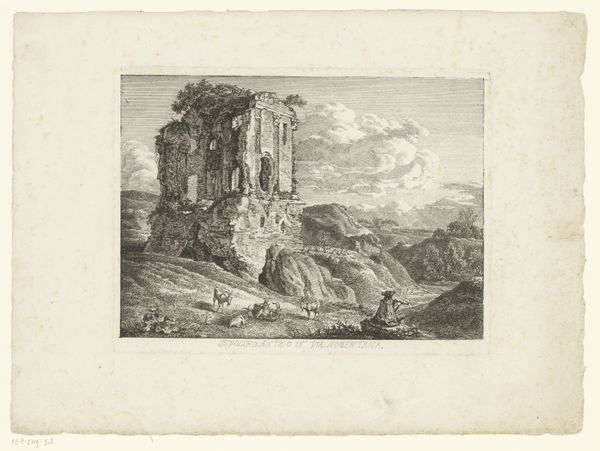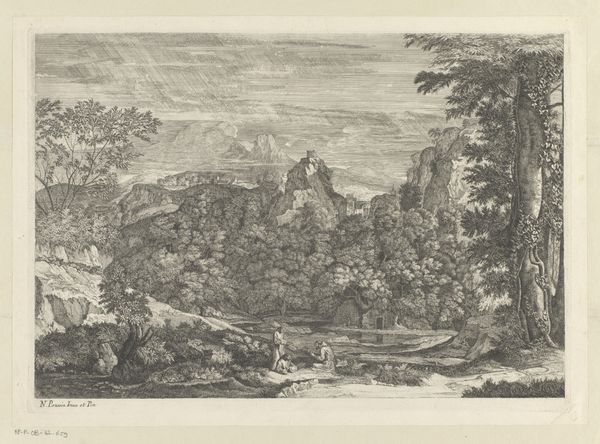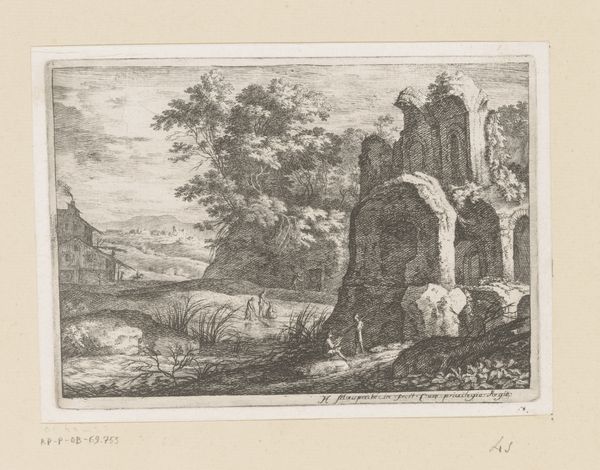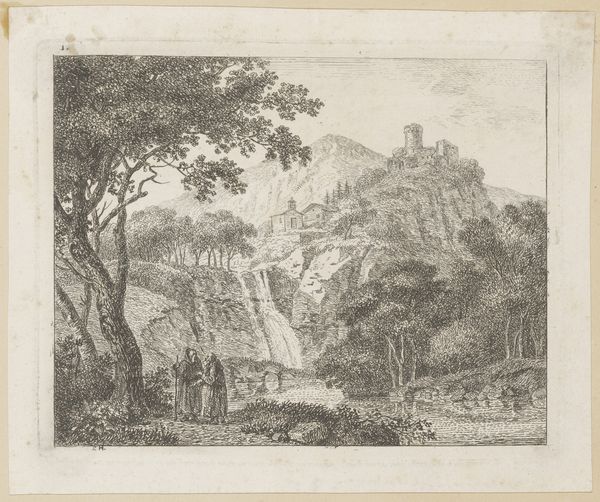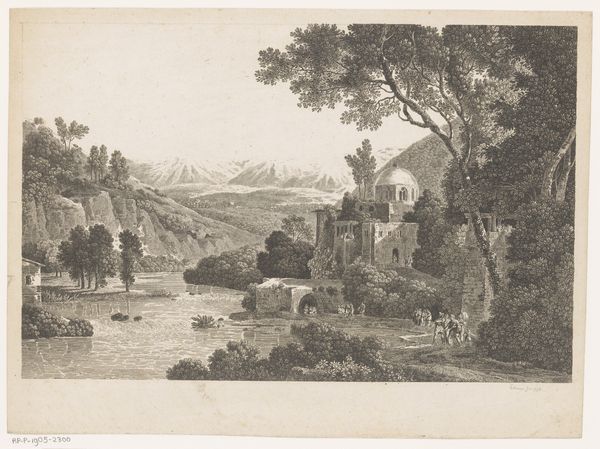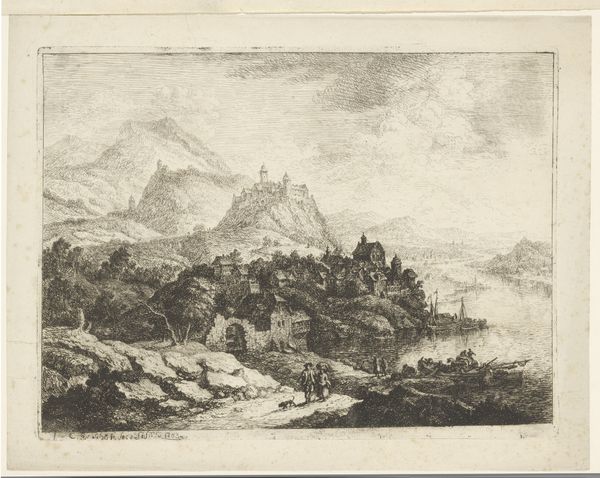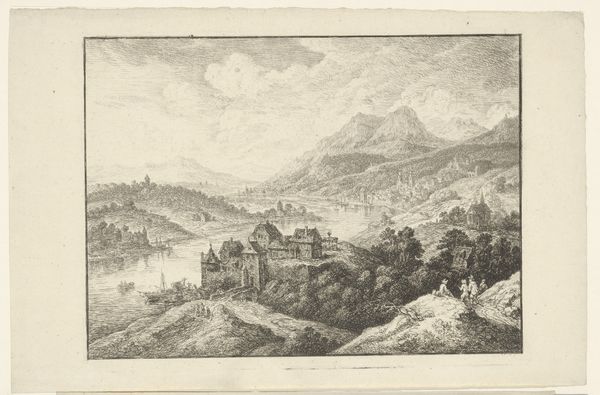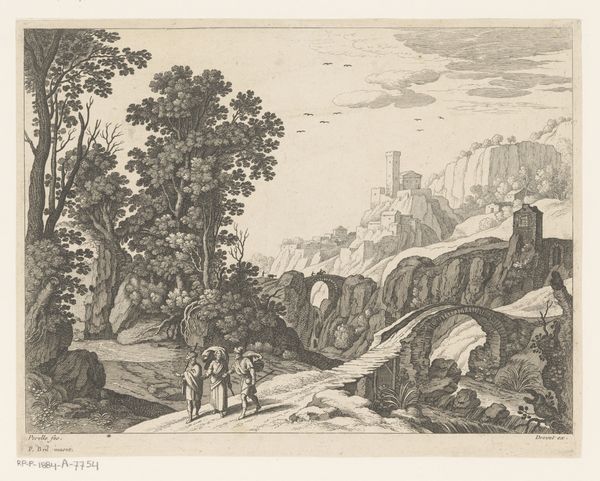
etching, engraving
#
baroque
#
etching
#
old engraving style
#
landscape
#
classical-realism
#
cityscape
#
history-painting
#
engraving
Dimensions: height 305 mm, width 465 mm
Copyright: Rijks Museum: Open Domain
Editor: Here we have Jacques Philippe Le Bas’ 1758 etching, "Gezicht op een ruïne bij Athene," or "View of a ruin near Athens." The scene feels both romantic and desolate. What strikes you about this work? Curator: It’s compelling how Le Bas positions ruins as simultaneously beautiful and imbued with loss. It’s a commentary on the Enlightenment's obsession with classical antiquity and the complex colonial implications inherent in that gaze. We see an idealised version of Greece but it is filtered through the lens of European power, doesn’t it? How does the presence of the local people within the ruins make you feel? Editor: I hadn't considered the power dynamic at play. Their small scale seems to emphasize the grandeur of the past, but also their present marginalization. Almost like they are living in the shadow of a forgotten history. Curator: Precisely. The image engages with a specific kind of historical and cultural appropriation. Notice the strategic placement of these figures. The scene suggests the picturesque is prioritised over actual living conditions. Does the artwork then, idealize, or does it attempt some sort of commentary? What do you make of it? Editor: Perhaps it does both. The artist clearly appreciated the aesthetic of the ruin but by including those figures, maybe, he's nudging us to think about who is benefiting from this view, and at whose expense. It isn’t simply an innocent landscape anymore. Curator: It complicates it, right? Recognizing those layers—the romanticism, the colonialism, and the everyday lives of those in its shadow – allows for a much richer understanding. Editor: It certainly does. I'll never look at a classical landscape the same way again. Curator: Hopefully this inspires everyone to question what we think we know about these places and what histories are prioritised in art.
Comments
No comments
Be the first to comment and join the conversation on the ultimate creative platform.
